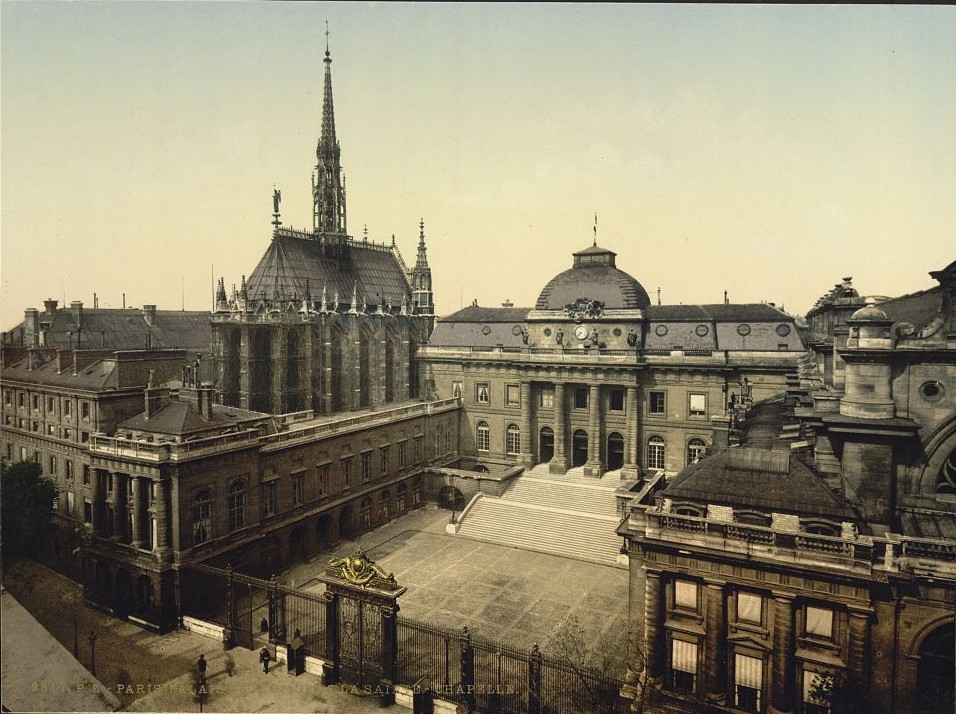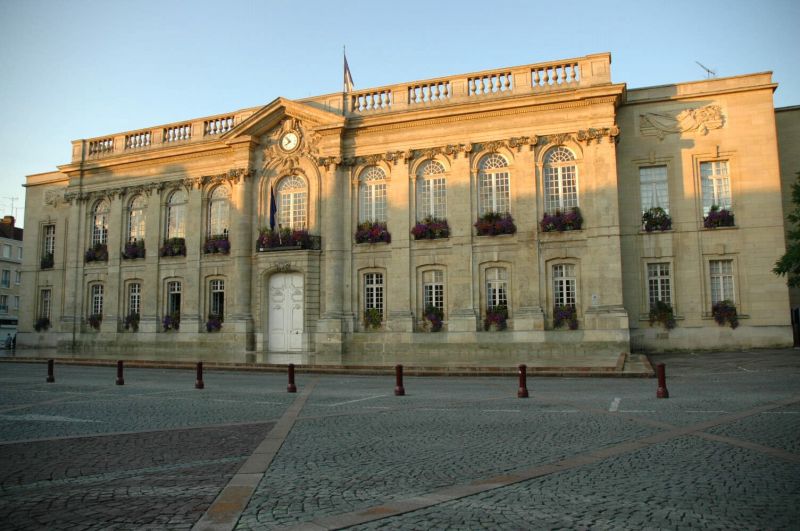A team of French researchers from the Laboratoire archéomatériaux et prévision de l'altération, the Laboratoire de mesure du carbone 14, and the Université Paris 8, has extracted carbon from the iron used to support Gothic cathedrals, and used radiocarbon dating and archaeological evidence to determine that such reinforcements had been implemented in the initial phase of construction.
© Library of CongressSainte-Chapelle, Paris, France in late 1800s.
Using radiocarbon dating on metal found in Gothic cathedrals, an interdisciplinary team has shown, for the first time through absolute dating, that iron was used to reinforce stone from the construction phase. This study, the result of a collaboration between the Laboratoire archéomatériaux et prévision de l'altération
1 (CNRS/CEA), the Laboratoire de mesure du carbone 14 (CNRS/CEA/IRD/IR SN/French ministry of Culture and Communication) and the team "Histoire des pou voirs, savoirs et sociétés" of Université Paris 8, sheds new light on the technical skill a nd intentions of cathedral builders. It will be published in the January 2015 issue of the
Journal of Archaeological Science.
This innovative method could improve understanding of medieval buildings in Europe, such as the Sainte-Chapelle, as well as in Asia, such as the temples of Angkor.
Gothic architecture, which flourished from the middle of the twelfth century around Paris, included considerable amounts of iron or steel2 reinforcements, as shown by historical and archeological investigation. However, cathedrals are living buildings, which, over the centuries, have undergone building projects for the purposes of modification, reparation or conservation. Consequently, if certain architectural and technological evidence suggested that the metal was part of the initial design, the date of its assimilation was still debated. Now an interdisciplinary team of French researchers has, for the first time, successfully used radiocarbon
3 dating to reliably determine the age of iron in cathedrals. By combining their expertise (in archeology, history, materials science, chemistry), they have proven that the metal reinforcements were integrated as a supplement to stone from the initial design phase.
Researchers achieved this result by measuring the quantity of trace amounts of 14C in the metal. In Europe, up until the Middle Ages, ore was smelt into metal in furnaces using charcoal, some of whose carbon was released and entrapped in the metal (in the form of iron carbide flakes). This carbon can now be extracted from the metal, and the tree that provided the charcoal can be dated, thus making it possible to estimate the age of the metal. The method seems simple, but it had never before been reliably implemented, for ferrous archeological metals are highly complex materials, containing carbon from multiple sources. A carbon extraction method adapted to the material had to be developed with the Laboratoire de mesure du carbone 14. What also made this study a success was the expertise of metallographers from the Laboratoire archéomatériaux et prévision de l'altération, who in collaboration with archeologist and historian colleagues at the CNRS, have been studying the structure, manufacture and use of metals in Gothic cathedrals for the past ten years.
By cross-referencing radiocarbon dating with archeological evidence, the research team established a detailed chronology (with a margin of error of a few years) of the integration of metal elements in the cathedrals of Beauvais and Bourges. This research shows, for the first time in absolute
4 terms, that metallic elements were used during construction, as in Bourges, or were even part of the building design, as in Beauvais.

© Lppa/WikiMedia CommonsBeauvais Mairie, Picardy, France.
In Beauvais, a number of the metallic tie-rods supporting the flying buttresses bear graffiti from the eighteenth century, potentially indicating that the metal may have been a later addition. However, certain pieces proved to date back to the beginning of the construction process (around 1225-1240 AD), suggesting that in order to succeed in erecting the world's highest Gothic choir (46.3 meters), iron was combined with stone from the initial design phase. In the Bourges cathedral choir, which is older (1195-1214 AD), an iron chain surrounding the choir proved to be contemporary with construction.
Nevertheless, it skirts a group of columns, while passing under some others, which clearly shows that it was not part of the original plan, but was integrated during construction. This analysis confirms that cathedral building yards were genuine laboratories where builders, coming from various trades, tested construction techniques to meet architectural challenges.
This absolute dating method opens the way toward a renewed understanding of medieval building yards. The research team will soon take samples from the Sainte-Chapelle, and is also focusing on the dating of temples and the iron trade in the Khmer Empire.
Notes:1The Laboratoire archéomatériaux et prévision de l'altération includes, on the Saclay campus, researchers from the Institut de recherche sur les archéomatériaux (CNRS/Université de technologie Belfort-Montbéliard/Université Bordeaux Montaigne/Université d'Orléans), the Service interdisciplinaire sur les systèmes moléculaires et les matériaux (SIS2M, CEA/CNRS) and the division Nanosciences et innovation pour les matériaux, la biomédecine et l'énergie (NIMBE, CEA). As of January 1st 2015, SIS2M will merge with NIMBE, which will thus become a CNRS/CEA joint laboratory.
2 Such as staples (parts embedded between two freestones to hold them together), chains (metallic armatures to make the walls more
rigid), and tie-rods (metal bars used to prevent the structure from shifting).
3 Carbon-14 (or radiocarbon) is one of the three forms (isotopes) of carbon. Present in living beings at a constant concentration during
their life, it is no longer replenished after death. Its concentration then decreases through radioactive disintegration. This makes it possible to date the remains of living organisms (bones, wood, etc.).
4 As opposed to relative chronology, which situates events in relation to one another, absolute dating assigns a numerical date to them.
References:"Consolidation or initial design? Radiocarbon dating of ancient iron alloys sheds light on the reinforcements of French gothic cathedrals," Stéphanie Leroy, Maxime L'Héritier, Emmanuelle Delqué-Kolic, Jean-Pascal Dumoulin, Christophe Moreau, Philippe Dillmann.
Journal of Archaeological Science, vol. 53 (January 2015), pp. 190-201. DOI: 10.1016/j.jas.2014.10.016.
Reader Comments
to our Newsletter